Pediatric Dental Services in New York
Pediatric Dental care you can count on
Choose us for high-quality, friendly kid's dental care with personalized plans and a great reputation.
Modern Techniques
Calming, Friendly Staff
Get Seen Quickly
Our Pediatric Dental Services
If you’re not sure your child needs dental treatment, please call us, and we’ll advise you. Below are some of the most common pediatric dental services our team treats here at our convenient New York City location.
Dental Examinations
A pediatric dental examination involves an assessment of the child's oral health by a specialized dentist. The dentist will check for any signs of tooth decay, gum disease, and other dental issues. The examination also includes a cleaning and fluoride treatment to prevent tooth decay and maintain oral health. The dentist may also talk to the parents and child about proper oral hygiene and answer any questions they may have.
Preventative Dental Care
Pediatric preventative dental care includes routine dental check-ups, cleanings, x-rays, fluoride treatments, and sealants to prevent tooth decay in children. It also involves educating parents and children on proper oral hygiene practices, such as brushing and flossing, a healthy diet, and regular dental visits to promote good oral health habits from a young age.
Restorations & Fillings
Pediatric dental restorations and fillings can involve pulpotomy or the application of dental materials, like stainless steel or porcelain crowns, to restore a damaged tooth or cavity. Children may require sedation during the procedure due to anxiety, fear, or inability to sit still. We offer nitrous oxide sedation (laughing gas). This can help the child remain calm and comfortable during the procedure, making it easier for the dentist to work and resulting in a more successful outcome.
Dental Emergencies
Pediatric dental emergency treatment offers prompt care for kids' dental emergencies. It includes extractions, fillings, root canals, and treatment for injuries to the teeth/mouth. Our clinic, which specializes in treating children, ensures prompt access to care, even allowing for same-day appointments. The service aims to alleviate pain, prevent infection, and preserve oral health.
Need pediatric treatment?
What Our Patients Say
You don’t have time to waste when you’re facing a severe toothache, infection, or injury. You need a pediatric dentist you can trust to deliver the highest standards of care. See why NYC patients trust Twinkle Dentist Pediatrics for their children’s care.



What to expect from your pediatric dental appointment
Visiting the dentist doesn’t have to be scary! With our experienced pediatric dental staff by your side, you’ll feel immediately at ease as we carefully and methodically deliver care for your child.
1. Visit
Call and tell us what dental issues your child is dealing with and we’ll book you an appointment as soon as possible.
2. Intake
We collect medical history and payment information as well as discuss insurance acceptance before your appointment.
2. Triage
Once we assess the root of the problem, we’ll recommend treatment options, including dental sedation.
3. Treat
Once we answer all your questions and you understand the options, we carry out your child’s treatment.
Accepted Insurances:
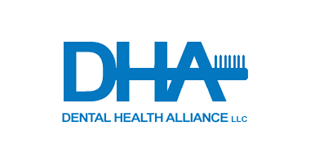













Connect with our team to verify your insurance’s coverage.
Frequently Asked Questions
What is considered a dental emergency?
We typically define a dental emergency as a patient who needs treatment to:
- Stop uncontrollable bleeding
- Treat severe tooth or gum pain
- Save a knocked-out tooth
- Fix a chipped or fractured tooth
- Stop a tooth infection
- Treat a tooth or gum abscess
In general, if you’re experiencing severe pain, distress, loss of function, or your condition will worsen if you don’t get fast treatment, we consider this a dental emergency and recommend you give us a call to book an emergency appointment.
How do I know if my tooth infection is spreading?
Tooth infections such as abscesses on the tooth or gums can be extremely dangerous if you don’t get them treated quickly. If you’re experiencing fever, swelling, dehydration, a quickening heart rate, pain in your stomach, or are finding it hard to breathe; please call us immediately.
Can you go to A&E with a toothache?
If you have a toothache, find swelling around your eye, neck, or mouth area, and it’s difficult to breathe, swallow, or speak, we’d advise you to call the NHS helpline on 111 immediately, and they will advise you on whether you need A&E treatment.
How long does an emergency root canal take?
Emergency root canals typically take between 1-2 hours to complete. This may be longer or shorter depending on the complexity of your dental problem.
A pediatric dentist has an extra two to three years of specialized training after dental school, and is dedicated to the oral health of children from infancy through their teenage years. Children, pre-teens, and teenagers all need different approaches to deal with their behavior, guide their dental growth and development, and help them avoid future dental problems. A pediatric dentist is best qualified to meet children’s needs of all ages.
It is very important to maintain primary teeth health. Neglected cavities frequently lead to problems which affect developing permanent teeth. Primary teeth – or baby teeth – are important for (1) proper chewing and eating, (2) providing space for permanent teeth and guiding them into the correct position, and (3) permitting normal development of jaw bones and muscles. Primary teeth also affect the development of speech and add to an attractive appearance. While the front 4 teeth last until 6-7 years of age, the back cuspids and molars aren’t replaced with permanent teeth until age 10-13.
 Children’s teeth begin forming before birth. As early as 4 months, the first baby teeth to erupt are the lower central incisors, followed closely by the upper central incisors. Although all 20 primary teeth usually appear by age 3, the pace and order of their eruption varies.
Children’s teeth begin forming before birth. As early as 4 months, the first baby teeth to erupt are the lower central incisors, followed closely by the upper central incisors. Although all 20 primary teeth usually appear by age 3, the pace and order of their eruption varies.
Permanent teeth begin appearing around age 6, starting with the first molars and lower central incisors. At age 8, you can generally expect the bottom 4 primary teeth (the lower central and lateral incisors) and the top 4 primary teeth (the upper central and lateral incisors) to be gone and permanent teeth to have taken their place. There is a one to two year break from ages 8-10, and then the rest of the permanent teeth will start to come in. This process continues until approximately age 21.
Adults have 28 permanent teeth, or up to 32 including the third molars (called wisdom teeth).
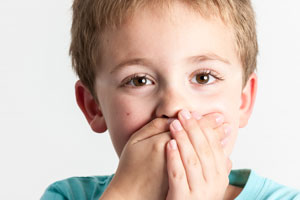 Toothache:
Toothache:
Clean the area of the affected tooth thoroughly. Rinse your mouth vigorously with warm water, or use dental floss to dislodge impacted food or debris. DO NOT place aspirin on the gum or on the aching tooth. If your face is swollen, apply a cold compression and contact your dentist immediately.
Cut Tongue, Lip or Cheek: Apply ice to the affected area(s). If there is bleeding, apply firm but gentle pressure with a gauze or cloth. If the bleeding cannot be controlled by simple pressure, call a doctor or visit the emergency room.
Knocked Out Permanent Tooth: If possible, find the tooth. Handle the tooth by
the crown, and be careful not to touch the root portion. You may rinse the tooth but DO NOT clean or handle the tooth excessively. Inspect the tooth for fractures. If it is sound, try to reinsert it in its socket. Hold the tooth in place by gently biting on a gauze or clean cloth. If you cannot reinsert the tooth, place the tooth in a cup containing the saliva of the person that lost it, or use milk, but NOT water. The tooth may also be carried in the mouth beside the cheek. The person who lost their tooth must see a dentist IMMEDIATELY! Time is a critical factor in saving the tooth.
Knocked Out Baby Tooth: Contact your pediatric dentist. Unlike a permanent tooth, the baby tooth should not be replanted due to possible damage to the developing permanent tooth. In most cases, no treatment is necessary.
Chipped/Fractured Permanent Tooth: Time is a critical factor, contact your pediatric dentist immediately to reduce the chance of infection or the need for extensive dental treatment. Rinse the mouth with water and apply a cold compress to reduce swelling. If you can find the broken tooth piece, bring it with you to the dentist in a glass of milk, or the person’s saliva. DO NOT USE WATER TO TRANSPORT A CHIPPED TOOTH.
Chipped/Fractured Baby Tooth: Contact your pediatric dentist.
Severe Blow to the Head: Call 911 immediately or take your child to the nearest emergency room.
Possible Broken or Fractured Jaw: Keep the jaw from moving and take your child to the nearest emergency room.
Read more about how to prevent dental emergencies during recreational activities and sports with mouth guards.
Radiographs (X-Rays) are a vital and necessary part of your child’s dental diagnostic process. Without them, certain dental conditions can be missed.
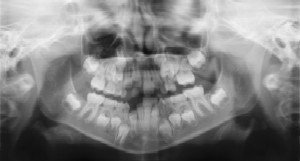
Radiographs allow dentists to diagnose and treat health conditions that cannot be detected during a clinical examination, and they detect much more than cavities. For example, radiographs may be needed to survey erupting teeth, diagnose bone diseases, evaluate the results of an injury, or plan orthodontic treatment. If dental problems are found and treated early, dental care is more comfortable for your child and more affordable for you.
The American Academy of Pediatric Dentistry recommends radiographs and examinations every six months for children with a high risk of tooth decay. On average, most pediatric dentists request radiographs approximately once a year. Approximately every 3 years, it is a good idea to obtain a complete set of radiographs, either a panoramic and bitewings or periapicals and bitewings.
Pediatric dentists are particularly careful to minimize the exposure of their patients to radiation. With contemporary safeguards, the amount of radiation received in a dental X-ray examination is extremely small. The risk is negligible. In fact, dental radiographs represent a far smaller risk than an undetected and untreated dental problem. Today’s equipment filters out unnecessary x-rays and restricts the x-ray beam to the area of interest. High-speed film and proper shielding assure that your child receives a minimal amount of radiation exposure.
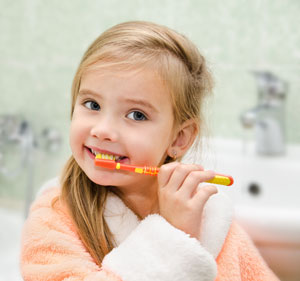 Tooth brushing is one of the most important tasks for good oral health. But, many toothpastes and tooth polishes can damage young smiles with harsh abrasives, which can wear away young tooth enamel. When looking for a toothpaste for your child, make sure to pick one that is recommended by the American Dental Association, as shown on the box and tube. These toothpastes have undergone testing to insure they are safe to use.
Tooth brushing is one of the most important tasks for good oral health. But, many toothpastes and tooth polishes can damage young smiles with harsh abrasives, which can wear away young tooth enamel. When looking for a toothpaste for your child, make sure to pick one that is recommended by the American Dental Association, as shown on the box and tube. These toothpastes have undergone testing to insure they are safe to use.
Use only a smear of toothpaste (the size of a grain of rice) to brush the teeth of a child less than 3 years of age. For children 3 to 6 years old, use a pea-sized amount of toothpaste and perform or assist your child’s toothbrushing. Remember that young children do not have the ability to brush their teeth effectively on their own. Children should not swallow excess toothpaste after brushing
Parents are often concerned about their children grinding their treeth while they sleep (bruxism). Often, the first indication of bruxism is the noise created by the grinding, or, the parent may notice teeth wearing down. One theory is that psychology affects bruxism. Stress due to a new environment, divorce, changes at school, etc. can influence a child to grind their teeth. Another theory links pressure in the inner ear. If there are pressure changes (like in an airplane during take-off and landing, when people are chewing gum, etc.) the child will grind by moving their jaw to relieve this pressure.
The majority of cases of pediatric bruxism do not require any treatment. If excessive wear of the teeth – attrition – is present, then a nightly mouth guard may be prescribed. The good news is that most children outgrow bruxism. The grinding typically decreases between the ages of 6-9 and children tend to stop grinding altogether between ages 9-12. If you suspect bruxism, discuss this with your pediatrician or pediatric dentist.
 Sucking is a natural reflex in infants and young children. They may use thumbs, fingers, pacifiers and other objects on which to suck. It makes them feel secure and happy, or provides a sense of security during difficult periods. Since thumb sucking is relaxing, it may induce sleep.
Sucking is a natural reflex in infants and young children. They may use thumbs, fingers, pacifiers and other objects on which to suck. It makes them feel secure and happy, or provides a sense of security during difficult periods. Since thumb sucking is relaxing, it may induce sleep.
Thumb sucking that persists beyond the eruption of the permanent teeth can cause problems with the proper growth of the mouth and tooth alignment, and the intensity at which a child sucks on fingers or thumbs will determine whether or not dental problems may result. Children who rest their thumbs passively in their mouths are less likely to have difficulty than those who vigorously suck their thumbs.
Children should cease thumb sucking by the time their permanent front teeth are ready to erupt. Usually, children stop between the ages of 2 and 4. Peer pressure causes many school-aged children to stop.
Pacifiers are no substitute for thumb sucking. They can affect the teeth essentially the same way as sucking thumbs. However, pacifier use can be controlled and modified more easily than the thumb or finger habit. Consult your pediatric dentist if you have concerns about thumb sucking or pacifier use.
A few suggestions to help your child quit thumb sucking:
- Children often suck their thumbs when feeling insecure. Focus on correcting the cause of anxiety, instead of the thumb sucking.
- Children who are sucking for comfort will feel less inclined to indulge the habit when their parents provide comfort.
- Reward children when they refrain from sucking during difficult periods, such as when being separated from their parents.
- Your pediatric dentist can encourage your child to stop sucking and explain what could happen if they continue.
- If these approaches don’t work, remind your child of their habit by bandaging the thumb or putting a sock on their hand at night. Your pediatric dentist may recommend the use of a mouth appliance.
Inside the tooth, under the enamel and a hard layer called the dentin, is a soft tissue called pulp. The pulp contains blood vessels, nerves, and connective tissue and creates the hard tissues surrounding the tooth during development. The pulp extends from the crown of the tooth to the tip of the roots – where it connects to the tissues surrounding the root. The pulp is important during a tooth’s growth and development The purpose of pulp therapy in Pediatric Dentistry is to maintain the vitality of the affected tooth so that the tooth is not lost.
Dental caries (cavities) and traumatic injury are the main reasons for a tooth to require pulp therapy. Pulp therapy is often referred to as a “nerve treatment”, “children’s root canal”, “pulpectomy” or “pulpotomy”. The two common forms of pulp therapy in children’s teeth are the pulpotomy and pulpectomy.
A pulpotomy removes the diseased pulp tissue within the crown portion of the tooth. Next, an agent is placed to prevent bacterial growth and to calm the remaining nerve tissue. This is followed by a final restoration, which is usually a stainless steel crown.
A pulpectomy is required when the entire pulp is affected into the root canal of the tooth. During this treatment, the diseased pulp tissue is completely removed from both the crown and root. The canals are cleansed, disinfected and, in the case of primary teeth, filled with a resorbable material. Then, a final restoration is placed. A pulpectomy for a permanent tooth would be filled with a non-resorbing material.
 Developing malocclusions – or bad bites – can be recognized as early as 2-3 years of age. Often, early steps can be taken to reduce the need for major
Developing malocclusions – or bad bites – can be recognized as early as 2-3 years of age. Often, early steps can be taken to reduce the need for major
orthodontic treatment at a later age.
Stage I – Early Treatment: This period of treatment encompasses ages 2 to 6. At this young age, we are concerned with underdeveloped dental arches, the premature loss of primary teeth, and harmful habits such as finger or thumb sucking. Treatment initiated during this stage of development is often very successful and many times, though not always, can eliminate the need for future orthodontic/orthopedic treatment.
Stage II – Mixed Dentition: This period covers the ages of 6 to 12, with the eruption of the permanent incisor (front) teeth and 6 year molars. Treatment concerns deal with jaw malrelationships and dental realignment problems. This is an excellent stage to start treatment, when indicated, as your child’s hard and soft tissues are usually very responsive to orthodontic or orthopedic forces.
Stage III – Adolescent Dentition: This stage deals with the permanent teeth and the development of the final bite relationship.
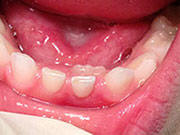 This is a very common occurrence with children, and is usually the result of a lower baby tooth not falling out when the permanent tooth is erupting. In most cases, it will usually fall out on its own within two months. If it doesn’t, then contact your pediatric dentist because they can easily remove the tooth. The permanent tooth should then slide into its proper place.
This is a very common occurrence with children, and is usually the result of a lower baby tooth not falling out when the permanent tooth is erupting. In most cases, it will usually fall out on its own within two months. If it doesn’t, then contact your pediatric dentist because they can easily remove the tooth. The permanent tooth should then slide into its proper place.
